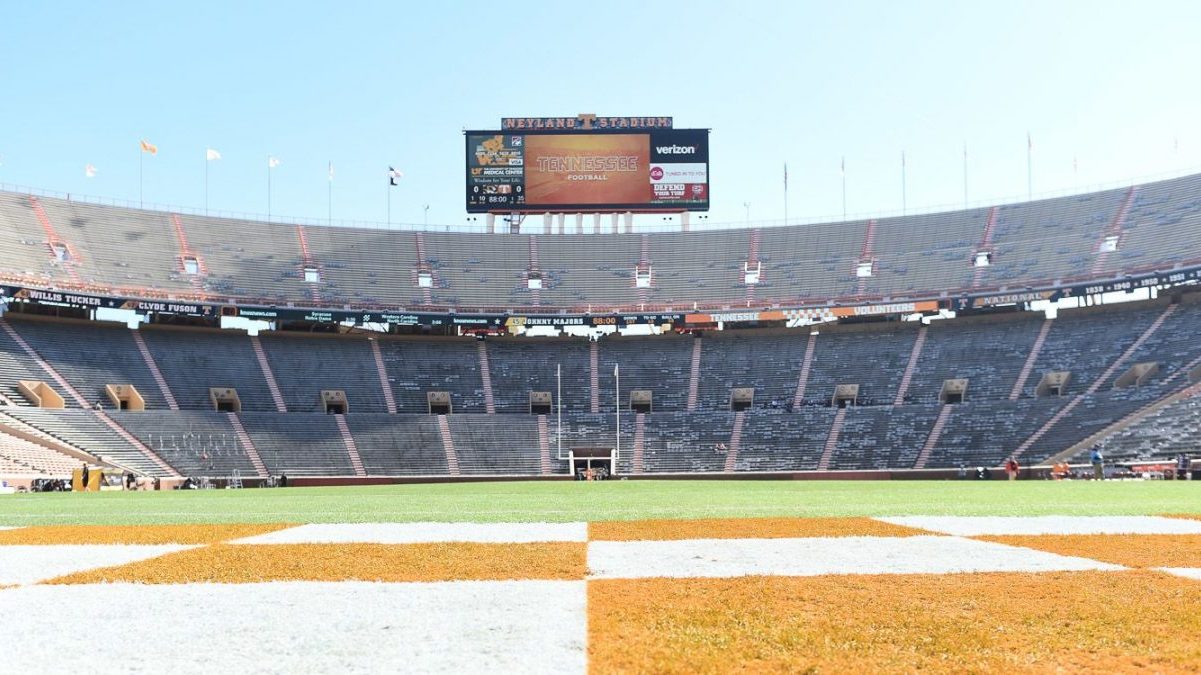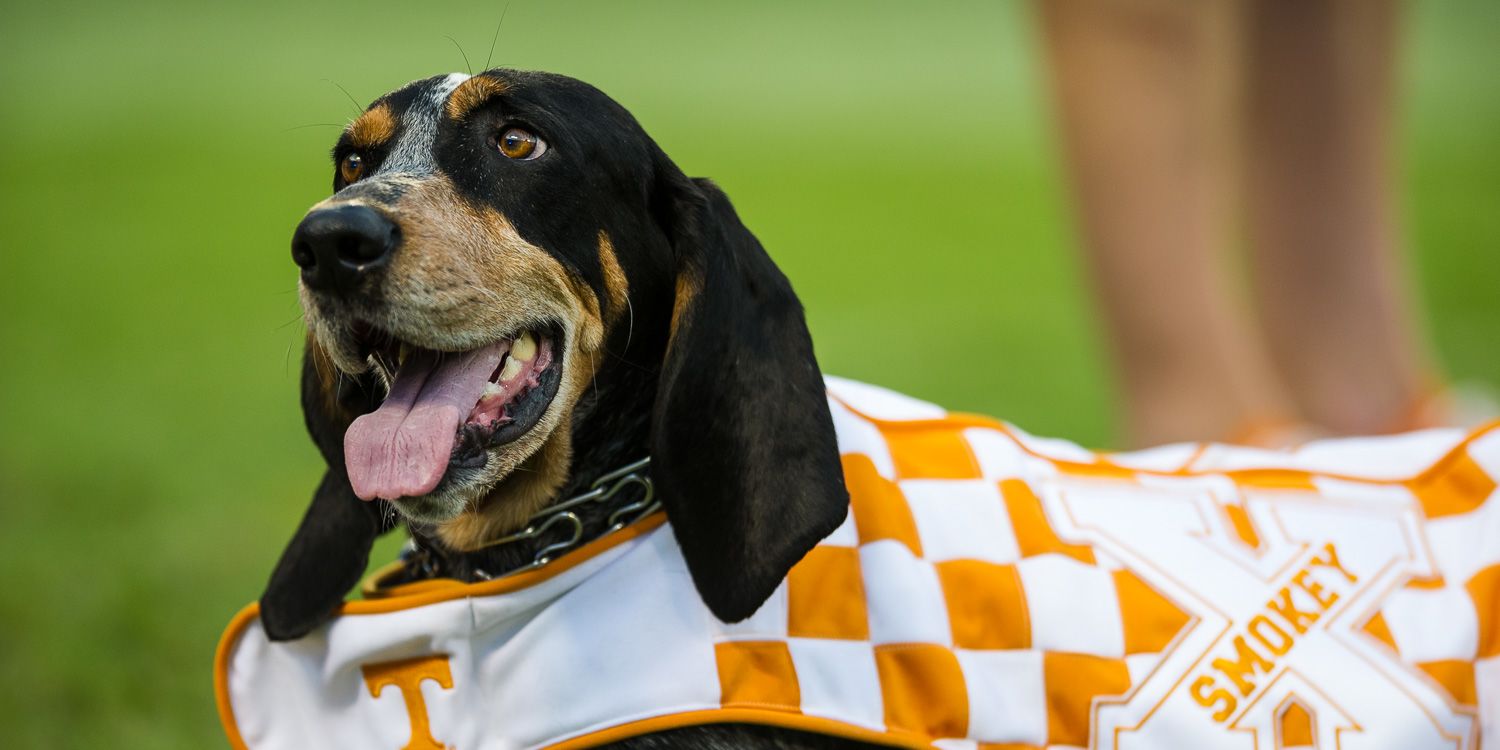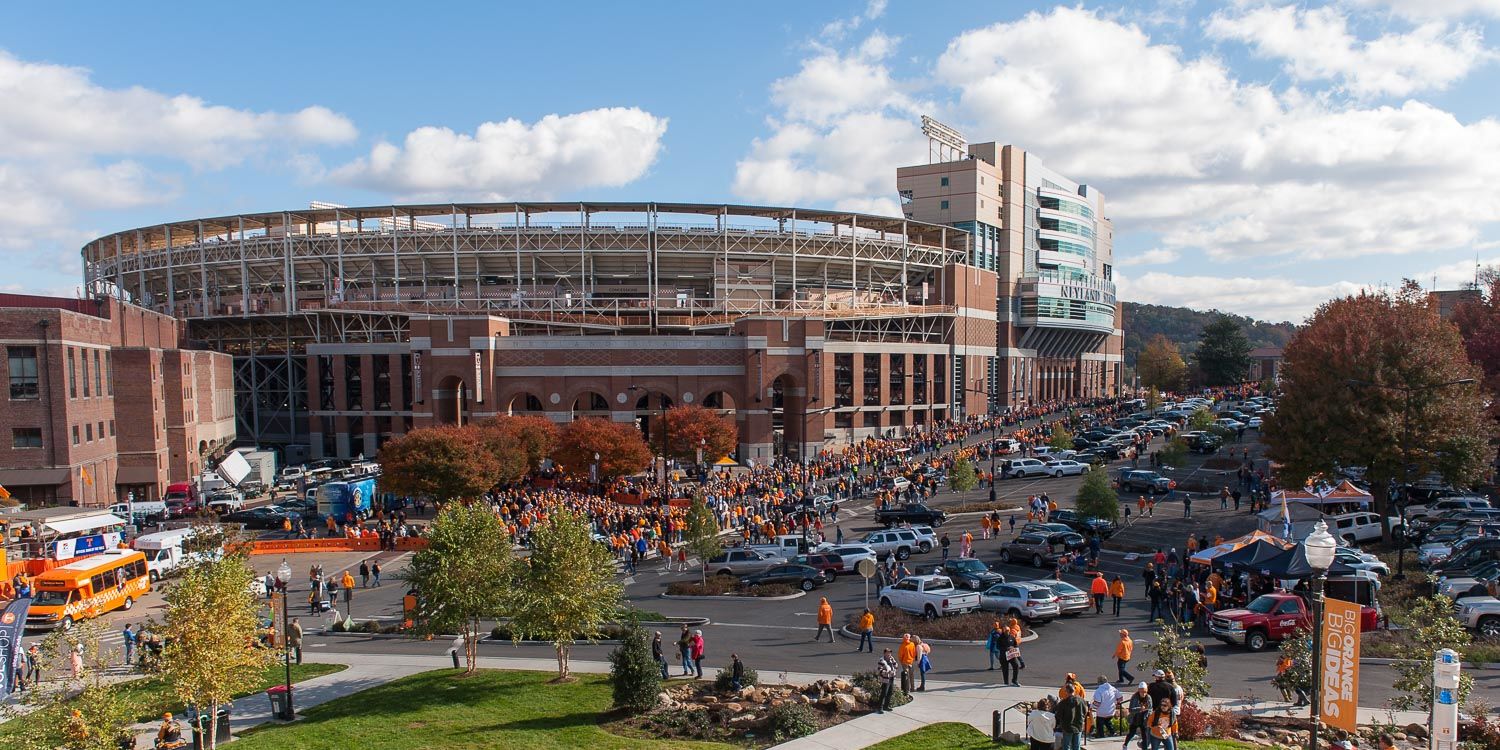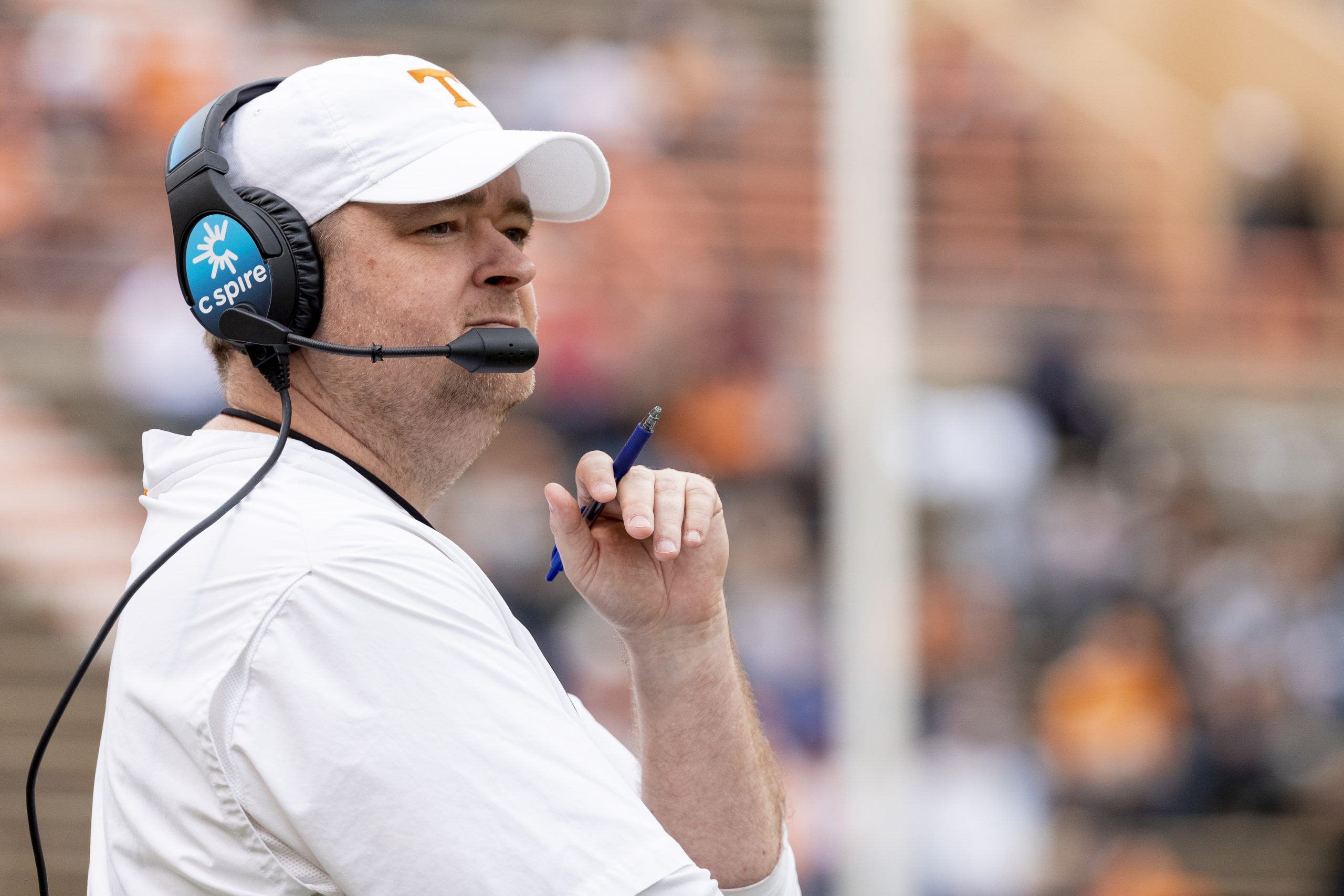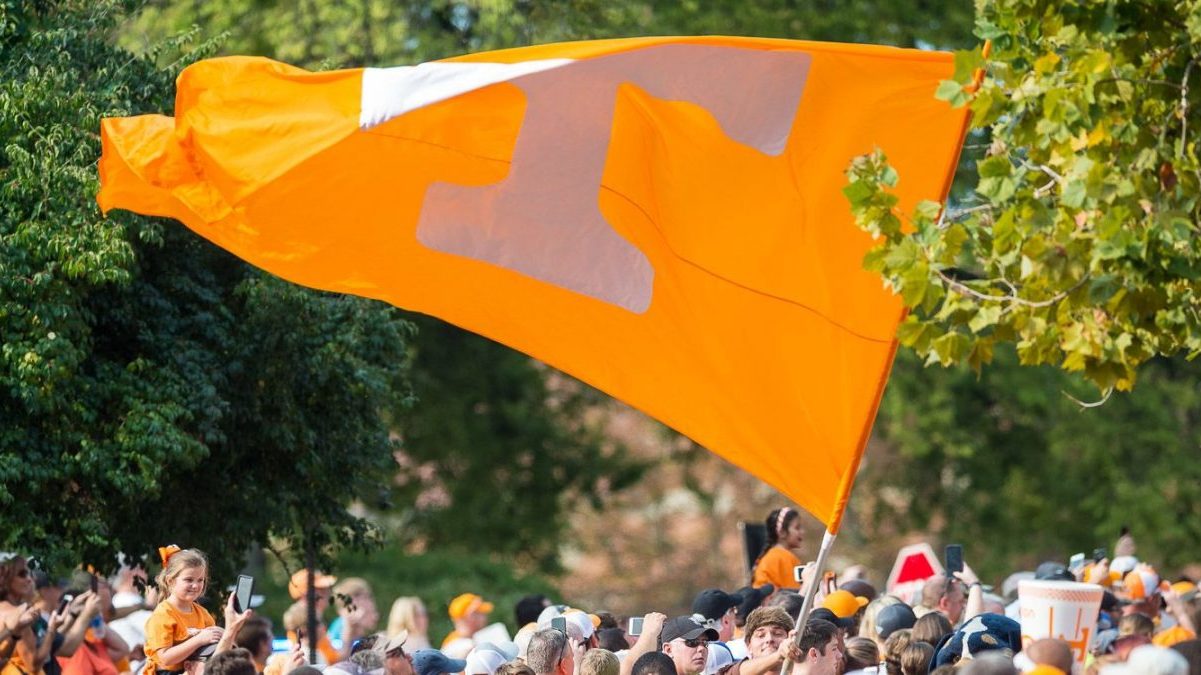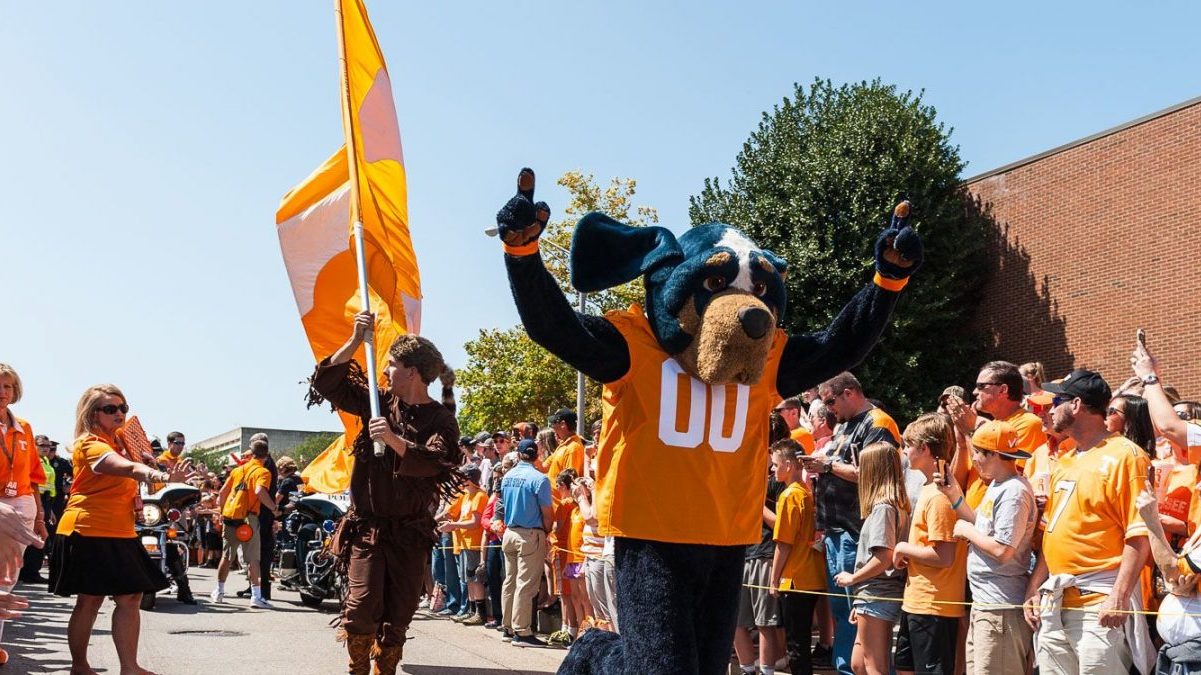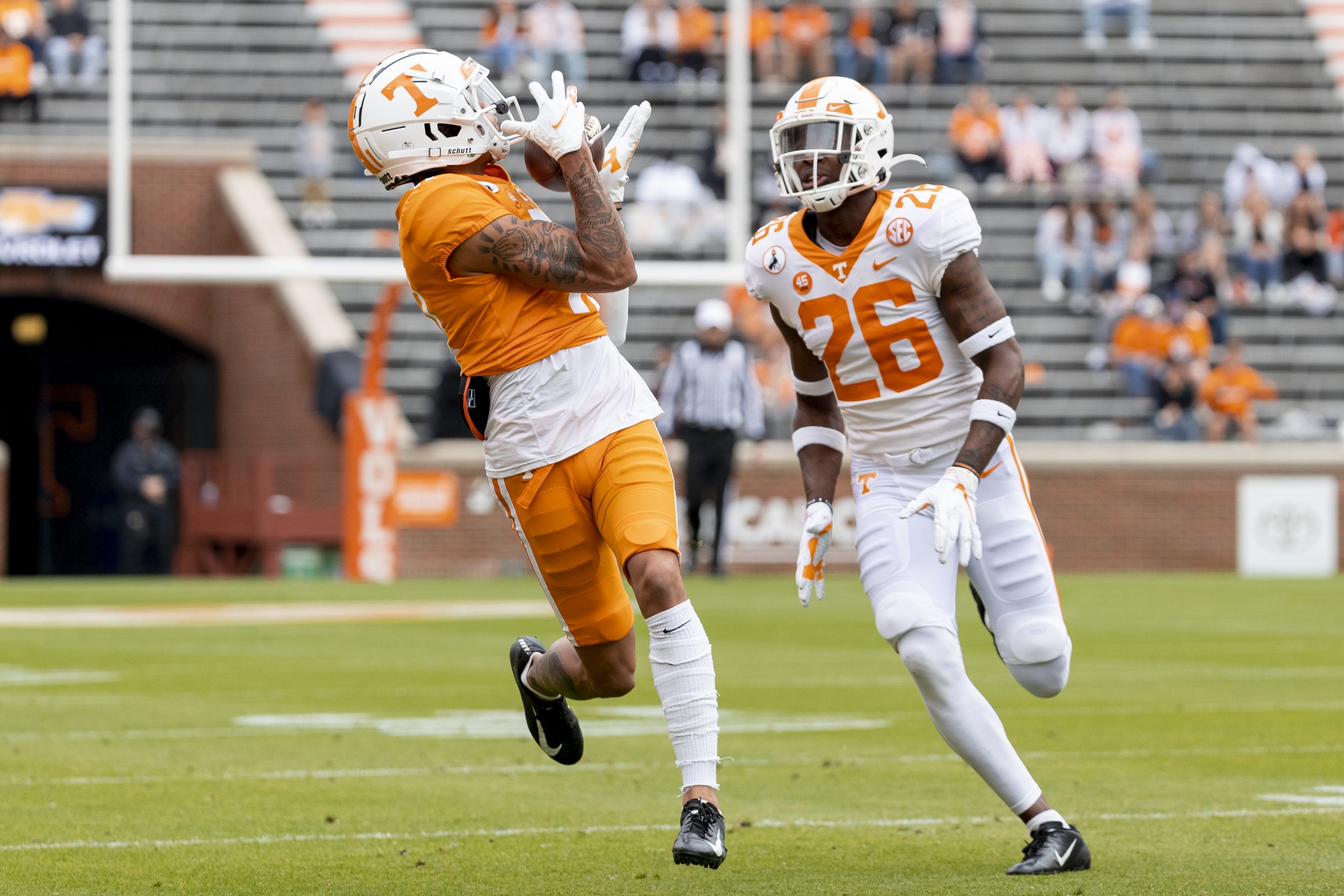The Vols opened +1.5 against Pittsburgh, making Saturday’s contest an excellent initial reading for the program Josh Heupel is seeking to build. Many of us have talked about how it feels like Lane Kiffin’s Week 2 test against UCLA a dozen years ago – more on that in a moment – but Vegas reveals the truth we’ve all come to know in the years since. Kiffin’s Vols were -10.5 at kickoff (closing lines via covers.com) against the Bruins in 2009. Tennessee was much closer to the championships we’re trying to chase back then.
“Home underdog vs mid-tier ACC team” doesn’t warm the heart. But if honesty continues to be the best policy, it’s an excellent acknowledgement of where Heupel and company will begin. And even though we’ve been playing this rebuilding game for a while now, it’s the quickest reading any of Tennessee’s year one coaches had available to them.
2018 – Jeremy Pruitt
The Vols were +10 against #17 West Virginia in Charlotte out the gate, fell behind 10-0 in two possessions, but found life with a 17-play touchdown drive to open the second quarter. The Vols trailed just 13-7 at the break, but were quickly buried by Will Grier’s three straight touchdown passes to open the third quarter, ultimately falling 40-14.
That felt like an opportunity given our proximity to winning big games two years earlier. But it’s easy to forget the real opportunity, at least according to Vegas, came three weeks later: the Vols were just +3.5 when Florida came to Knoxville in Dan Mullen’s first year. A spectacular dose of weirdness ensued, with the Vols neither punting or scoring a touchdown on their first ten possessions.
(Seriously, this gets lost in the storm of Pruitt LOL or whatever, but Tennessee’s outright aggression in this game – the anti-Butch LOL – earned them an incredible opening sequence of fumble, INT, turnover on downs, FG, safety, fumble, fumble, fumble, FG, INT. That’s the kind of art we’ve been making around here.)
So the first real reading on Pruitt was unfortunate but also weird: “Take it again, that can’t be right,” etc. This was easily overridden, at the time, by the upset of #21 Auburn three weeks later.
2013 – Butch Jones
Speaking of weird and unfortunate, Jones’ second game came against Western Kentucky in 2013, with Bobby Petrino on the sideline and Jeff Brohm calling plays. This group did ultimately finish 8-4, making the -14 line at kickoff feel about right in hindsight. But they turned it over five times in six plays, handing Tennessee an easy 52-20 victory.
The Vols were then massive underdogs (rightfully so) at Oregon, with double-digit lines to follow at Florida and vs Georgia. The near miss in the latter made Butch Jones’ first one-possession line come the following week, +7 against #11 South Carolina, when Marquez North worked his magic and the Vols got their first ranked win since 2009. This was an incredible win given Tennessee’s recent past, the value of the present moment, and the future Jones was already building in recruiting. But there’s a reason these initial readings are just the first of many: in both a team’s ranking at the time and their place in the final AP poll, the Vols never beat a better team than this one under Butch Jones.
2010 – Derek Dooley
Super-weird fact about Dooley’s Year Zero: the Vols didn’t face a one-possession line until mid-November against Ole Miss. And that one, with the Vols -2.5 and winning 52-14, is the biggest positive surprise via Vegas for any Tennessee team in the post-Fulmer era.
The Vols were +10.5 against #7 Oregon in Knoxville in week two, where they built a 13-3 lead around a rain delay. Oregon led 20-13 midway through the third quarter but the Vols were driving. But a 76-yard pick six opened the proverbial floodgates, and the Vols gave up another three scores in the final 1.5 quarters. This was the beginning of Dooley’s, “We don’t handle adversity well,” mantra, which of course, never really changed under his watch.
2009 – Lane Kiffin
Back to UCLA: it’s a good idea for a first-year coach not to lose as a double-digit favorite. But the Bruins handed Tennessee two of their most infuriating losses of my lifetime in consecutive years, this one coming via a trio of Jonathan Crompton interceptions and a goal line stop on Montario Hardesty.
The Vols were -2.5 against Auburn in Gene Chizik’s first year in early October, but fell 26-22. So the first two readings left a bad taste in everyone’s mouth. But if you beat Georgia 45-19 the very next week (Vols +1), it’s all good.
So with Kiffin, Dooley, Butch, and Pruitt, our first meaningful opinions were formed not in toss-ups, but in games with lines of 10-14 points. Kiffin took a brutal loss in the moment, Dooley gave us hope for 2.5 quarters, Butch benefitted from a thousand turnovers, and Pruitt’s young defense ate a bad matchup. A common theme, of course: no one’s season or our take on these guys after one year was defined by that initial reading. We felt much better about Kiffin at the end of the season (pre-middle-of-the-night), about the same on Dooley and Butch, and were just generally confused by Pruitt, who beat two ranked teams then lost to Missouri and Vanderbilt by 25+ points to finish the year.
So the first reading is never the last reading. But it will establish the baseline, at least until the Vols get a chance to do something more memorable in Gainesville. And this first reading is much, much closer to a pick ’em than anything we’re used to seeing in a coach’s first year.
In fact, the nature of a rebuild suggests you probably won’t see much of that in the SEC, and the length of Tennessee’s project suggests Heupel probably won’t have the chance to lose a game as a 10+ point favorite. The games the Vols will be favored in look likely to either be very close or more like Bowling Green. But we might get pick ’em territory against Missouri, Kentucky, etc. How that’s gone for other Year 1 coaches at Tennessee:
Year One UT Coaches with lines of 0-3 points:
- Kiffin 3-3: -2.5 Auburn (L 26-22), +1 Georgia (W 45-19), -6 South Carolina (W 31-13), +6 Ole Miss (L 42-17), -3 Kentucky (W 30-24 OT), +4 Virginia Tech (L 37-14)
- Dooley 3-1: -2.5 Ole Miss (W 52-14), -7.5 Vandy (W 24-10), -2.5 Kentucky (W 24-14), -1 North Carolina (L nonsense)
- Butch 2-2: +7 South Carolina (W 23-21), +7.5 Auburn (L 55-23), -2.5 Vandy (L 14-10), -3.5 Kentucky (W 27-14)
- Pruitt 1-3: +3.5 Florida (L 47-21), +5 Kentucky (W 24-7), +5.5 Missouri (L 50-17), +3.5 Vandy (L 38-13)
The first word is never the last word. But it’ll be the one we start with on Saturday, in the earliest toss-up game any of these year one coaches have faced. What will we be talking about by Saturday afternoon?
